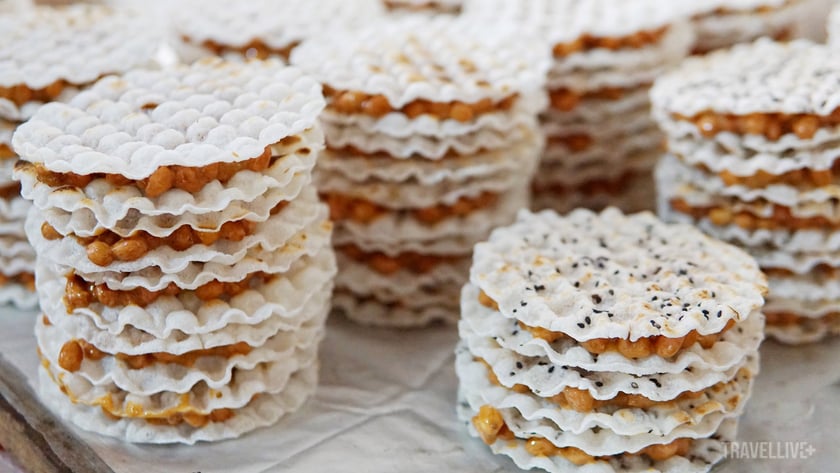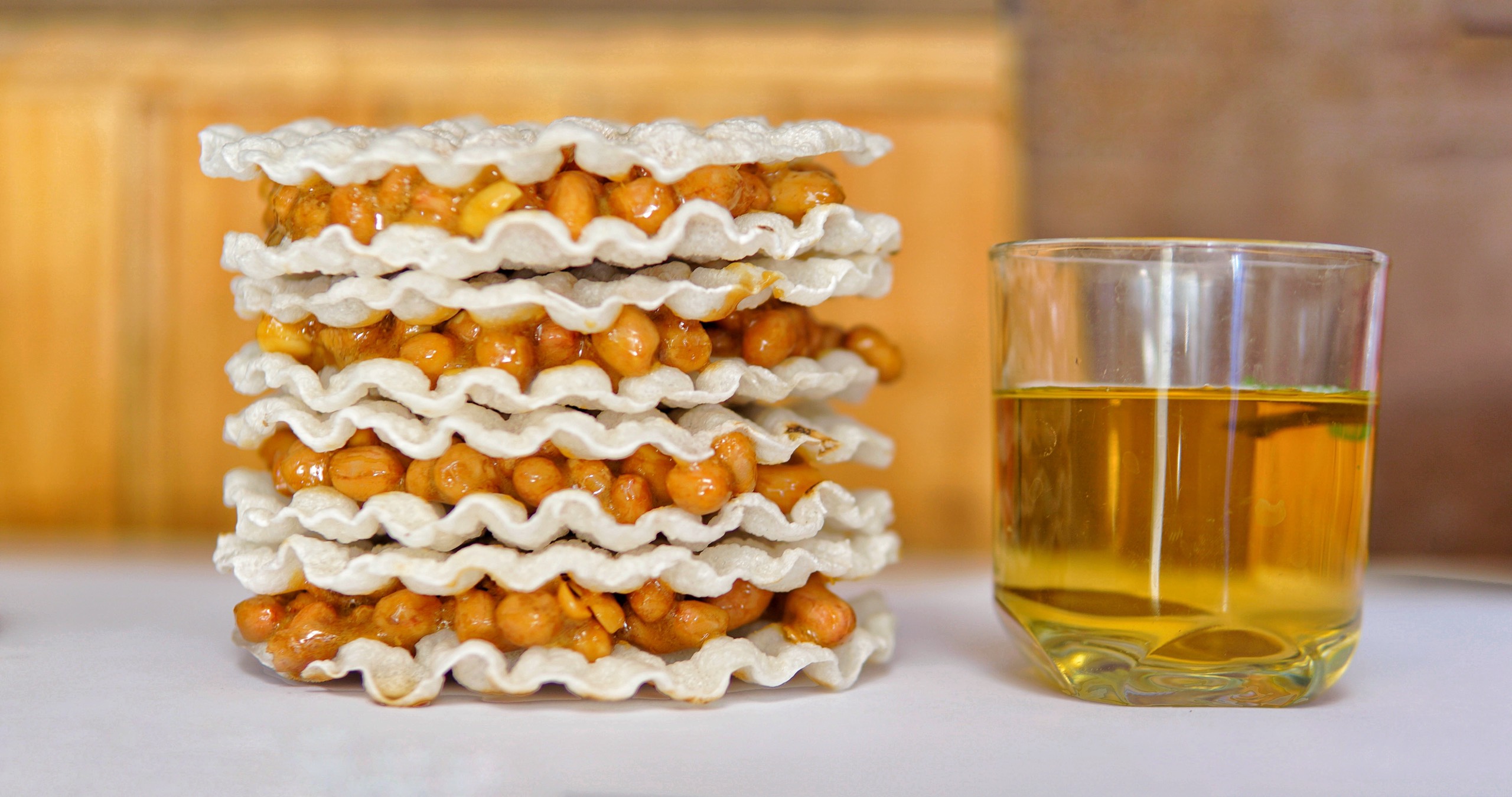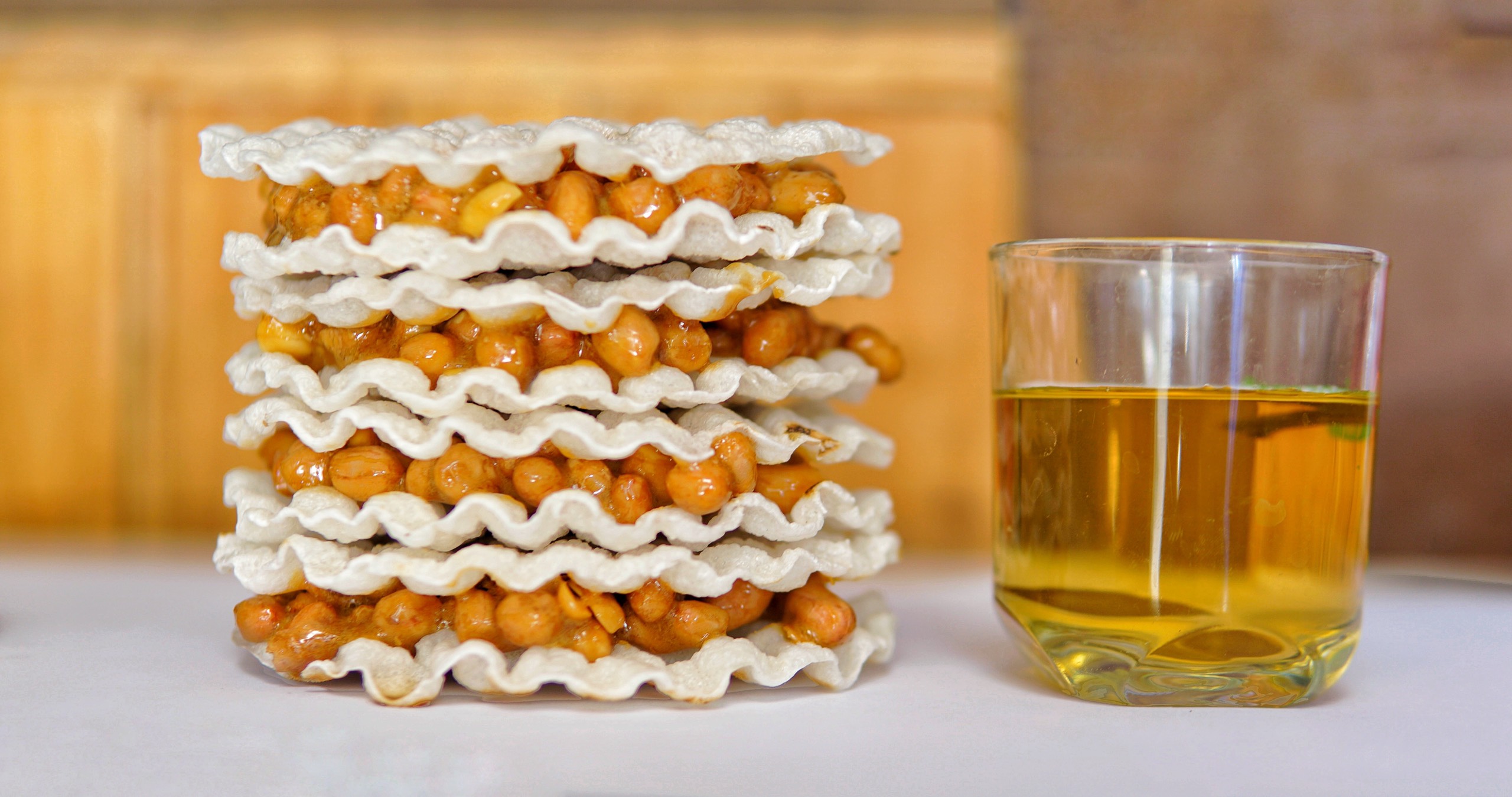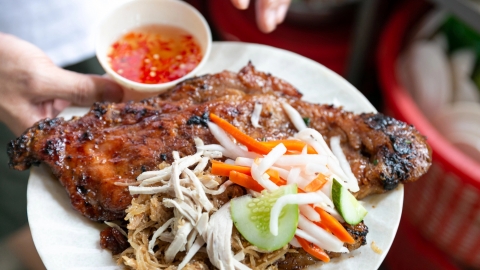Coming to Nghe An, we cannot help but mention the poem:
Green tea with a little spicy ginger
Cu Do Ha Tinh captivates people"...
Cu Do is known as the name of a famous specialty candy in Ha Tinh. The candy is cooked mainly from molasses, peanuts, malt, and fresh ginger. When mentioning Cu Do, everyone is curious about the origin and name of this unique specialty.
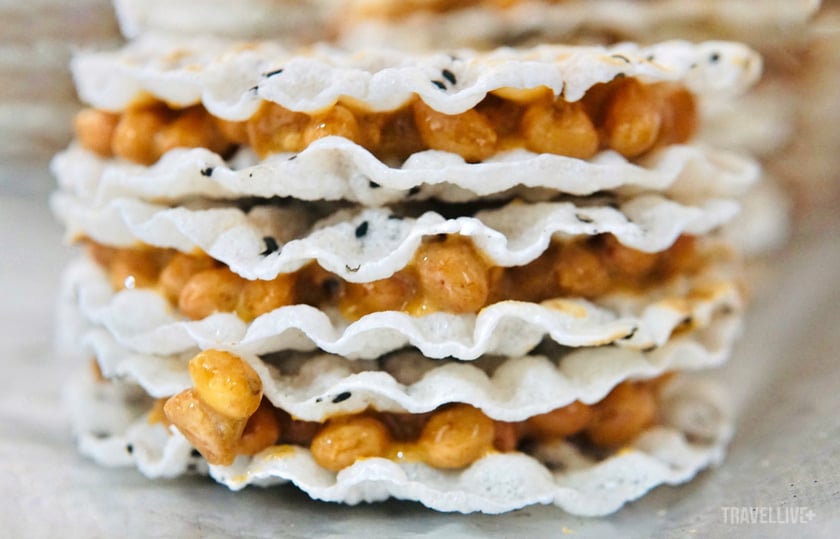
Cu Do is the name of a famous specialty candy in Ha Tinh.
25 year old family profession
Entering the cu do candy workshop of Mr. Ha Danh in Binh An commune, Loc Ha district, Ha Tinh province on a summer day in mid-July. The Central region's sunshine combined with the heat from the boiling pot of candy cooked on a traditional wood stove made me more curious than ever about how to make a cu do cake.
Mr. Ha Danh's hands are nimble, working from one step to another without stopping. While making candy, he said: "My family has a tradition of making cu do candy since my parents' generation in Ha Tinh city. In 1998, my wife and I started a business and developed this specialty brand. Since then, I have been making cu do candy for 25 years."
To make a delicious cu do candy, the selection of ingredients is very elaborate and important, including peanuts, ginger, malt, molasses, and 2 pressed rice paper pieces. The selection of ingredients will affect the taste when enjoyed.

Mr. Ha Danh and his wife have been making cu do candy since 1998, nearly 25 years now.
According to Mr. Ha Danh, peanuts must be firm and even, not flat or moldy. When peeling off the skin, the peanuts must be ivory white, not broken in half, and when bitten, the peanuts must be crispy and fragrant. The molasses must be pure molasses with a bright, shiny yellow color without any mixing, viscous, fragrant, and just thick enough so that when dipped in chopsticks and lifted up, the molasses can be pulled into long, thin strands. The sweetness of the molasses is strong but not harsh, when smelled, it has a gentle aroma. The pressed rice paper is not too thick or too thin, there is a sesame-coated type and a smooth rice paper type. In addition, the ginger is also carefully selected, such as fresh old ginger, with a tight skin and a spicy taste.
Cu Do candy looks easy to cook, but to make delicious candy and keep its flavor, the maker must have a secret to have the right amount of sweetness and keep the spicy ginger flavor, the fragrant peanut flavor, and the crispy rice paper flavor.

The rich taste of peanuts blends with sweet molasses but not too sweet, the moderate spicy taste of ginger through the skillful hands of the bartender and then cooked with firewood with meticulousness.
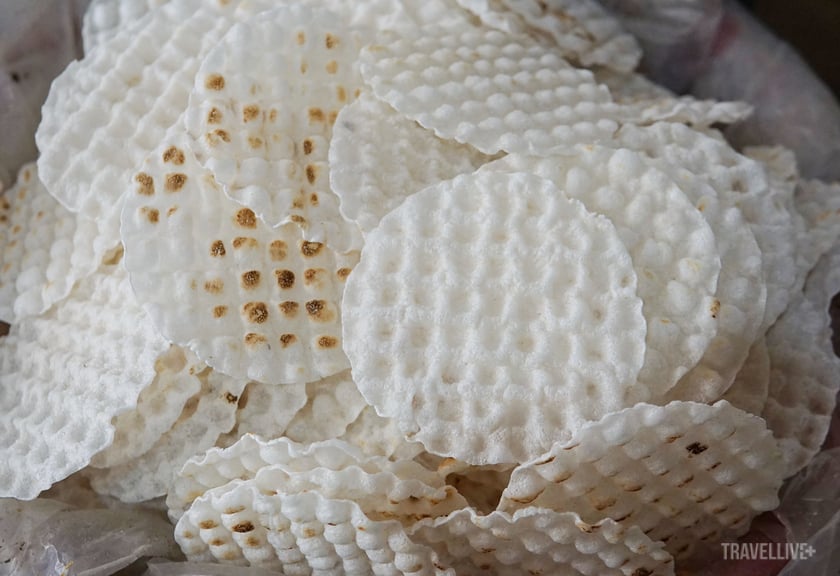
Rice paper is not too thick or too thin, there is sesame coated rice paper and plain rice paper.
"I still use the traditional method of cooking with firewood, watching the fire and stirring the pot myself. The process of keeping the fire burning is also considered one of the important steps to ensure the success of the candy batch. If the fire is too big, the molasses will stick to the bottom of the pot, causing it to burn. If the fire is small, it will not be strong enough to make the peanuts crispy. Therefore, the skill of the cook is to keep the fire burning evenly," said Mr. Ha Danh.
During the process of cooking the candy, do not let the heat get too high, while cooking, stir constantly so that the candy has a nice color but does not burn. When the molasses has cooked enough, add the minced ginger and peanuts and stir well until the molasses and peanuts blend together. To check the doneness of the candy, the maker will use chopsticks to dip in, pull out the molasses and put it in a bowl of water. If the molasses drops are round and do not dissolve, the batch of candy is considered complete. Finally, spread a piece of rice paper on a flat surface and scoop the candy evenly onto the cake, take the second piece of rice paper and clamp it while the molasses layer is still hot, this action must be done very skillfully so that the cake does not break.
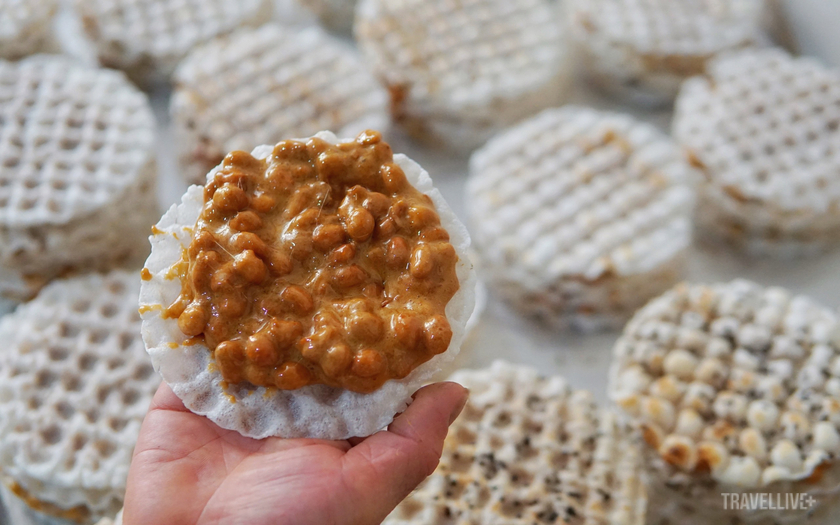
When the candy is cooked, the maker carefully scoops the candy onto the surface of the rice paper, spreads it evenly, then gently covers it with the remaining rice paper so that it does not break.

Whether the candy is cooked soft or hard, fragrant or not is each person's own secret. When the molasses pot is stirred to the desired thickness, the candy maker pours in the peanuts and stirs until the peanuts give off a rich aroma.
Being a craftsman and prioritizing cooking with wood stoves, Mr. Ha Danh and his wife are always busy all day from preparing ingredients, pouring candy, stirring candy to packaging, importing goods... On average, each day, he cooks about 10 pots of candy, each pot has at least 80 pieces. Cooking time is 30 minutes for each pot. Cu Do candy has many types: thick, thin, big, small, with sesame and without sesame. Price ranges from 60,000 to 120,000 VND/10 pieces. Cu Do can be kept for about more than 5 months.
After many years of working in the candy production industry, Mr. Ha Danh has gained a lot of experience, from choosing raw materials to cooking methods to ensure the candy has a delicious and fragrant flavor. In particular, candy products are cooked with a moderate amount of sweetness to ensure the health of consumers, aiming at a variety of customers.
Mr. Ha Danh added: “People think that making cu do candy is easy, but it is actually not easy at all. Just one small mistake can ruin the whole pot of candy or the product will not meet quality standards, so you have to be very careful in every step of choosing ingredients, processing techniques, and ensuring food hygiene and safety.”
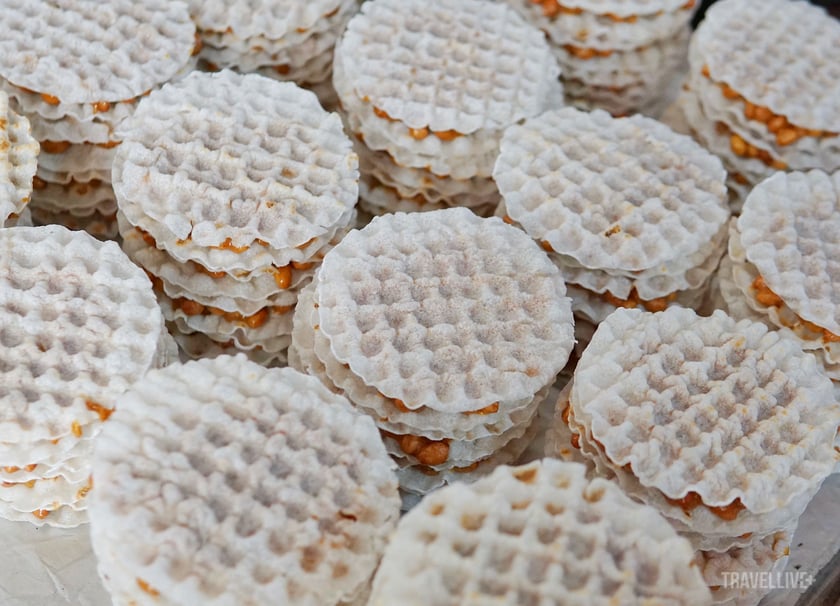
Every step from selecting raw materials, processing raw materials to production and packaging is carried out meticulously.
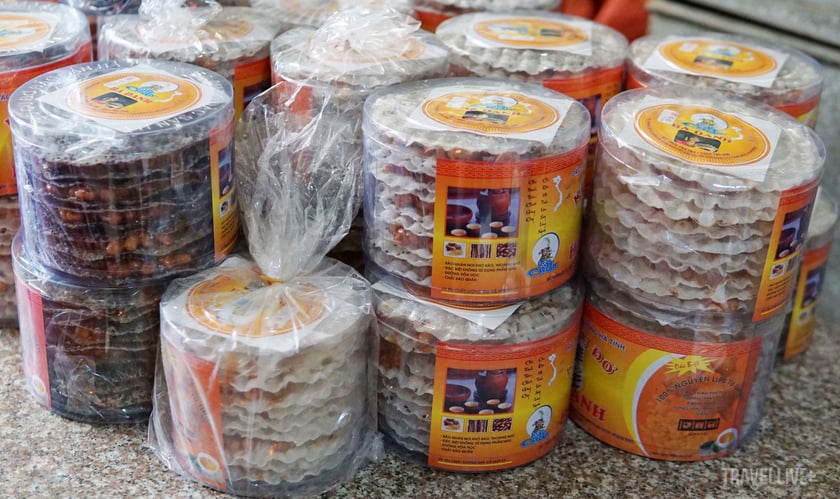
On average, Mr. Ha Danh cooks about 10 pots of candy every day, each pot has at least 80 pieces. Cooking time is 30 minutes for each pot. Cu Do candy has many types: thick, thin, big, small, with sesame and without sesame. Price ranges from 60,000 to 120,000 VND/10 pieces
Decoding the name "cu do"
In Ha Tinh, today, people still pass on the origin of the name cu do. From the given name of a person, the name of a famous gift was formed.
According to the locals, the name cu do originated from Huong Son district (Ha Tinh). It has been passed down from many generations that the candy was originally called "cu Hai" - the name of the first man who cooked this candy at that time. In addition to proper names, the word "cu" is an intimate name for boys (for example: cu Ty, cu Teo...). When the French colonialists invaded, French soldiers ate this candy and found it delicious so they learned about it. Knowing that the candy's name was "cu Hai", they changed the word "Hai" to "deux" for convenience. Therefore, "cu Hai" candy became "cu deux" candy and was pronounced "cu do" in Vietnamese.
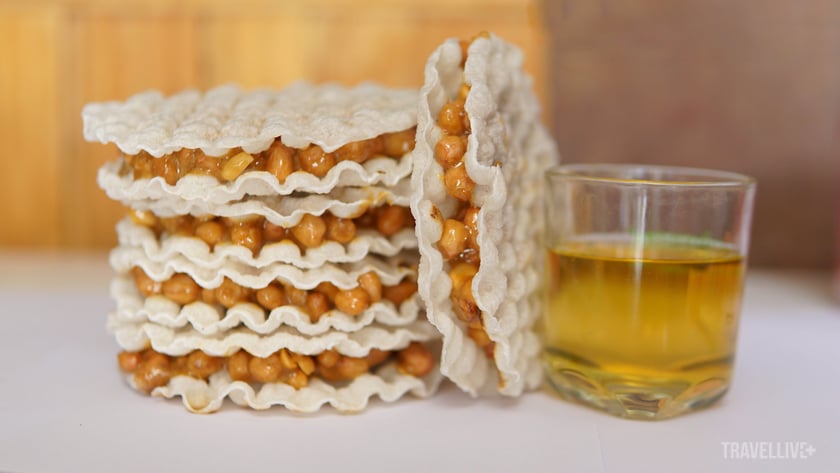
Cu Do candy is said to be as rich as the love of Ha Tinh countryside. Although sweet and fatty, it is still light when combined with green tea.
Nowadays, Ha Tinh still preserves the traditional craft of producing cu do in many localities. Not only developing the candy production profession typical of the sunny and windy Central region, but cu do candy is also a unique feature, a simple gift when mentioning Ha Tinh.
Eat a piece of cu do with the sweet aroma of molasses, the spicy taste of ginger, the crunchiness of peanuts and sesame rice paper. Take a sip of green tea with a rich sweetness mixed with a bitter taste, blending together enough to arouse the curiosity of every diner when mentioning this land.
Not only is it a unique gift for those who live far away from home, anyone who enjoys cu do can clearly feel the sweet taste mixed with a bit of spiciness crystallized from the efforts of Ha Tinh people through each piece of candy. Therefore, cu do is considered a meaningful gift so that whenever going far away, anyone who asks can clearly introduce and feel the song: "No matter where I go, I still remember Ha Tinh".
